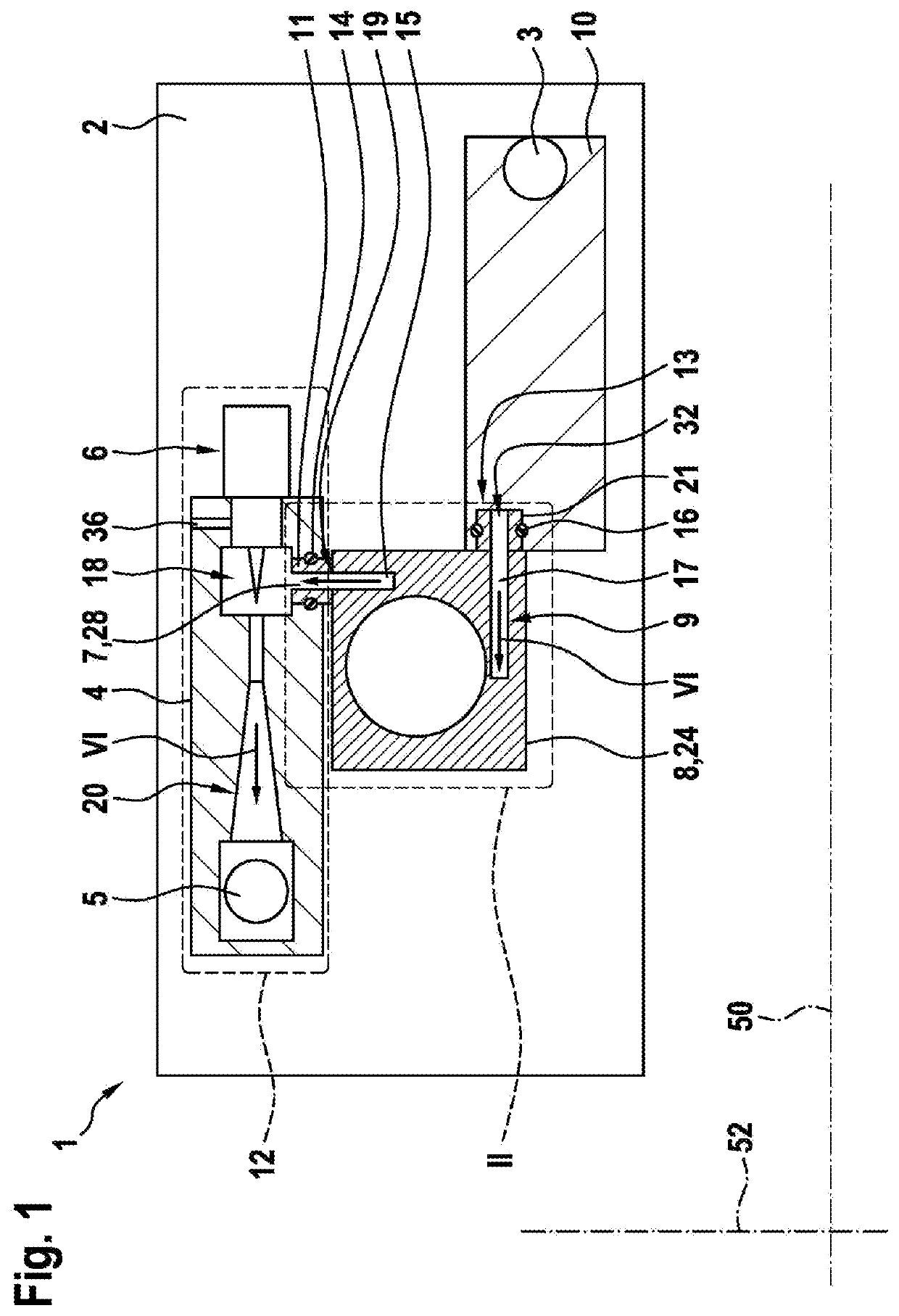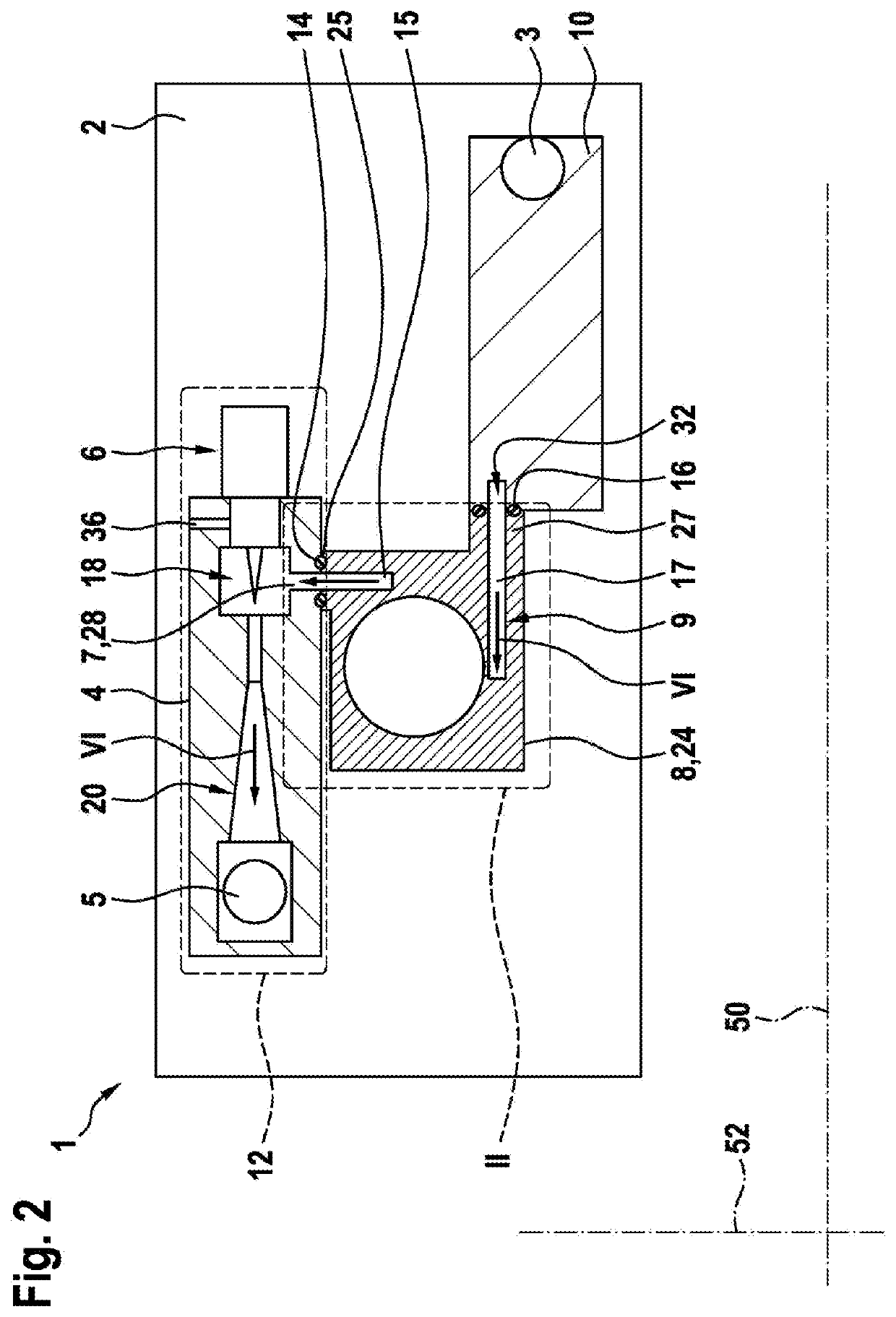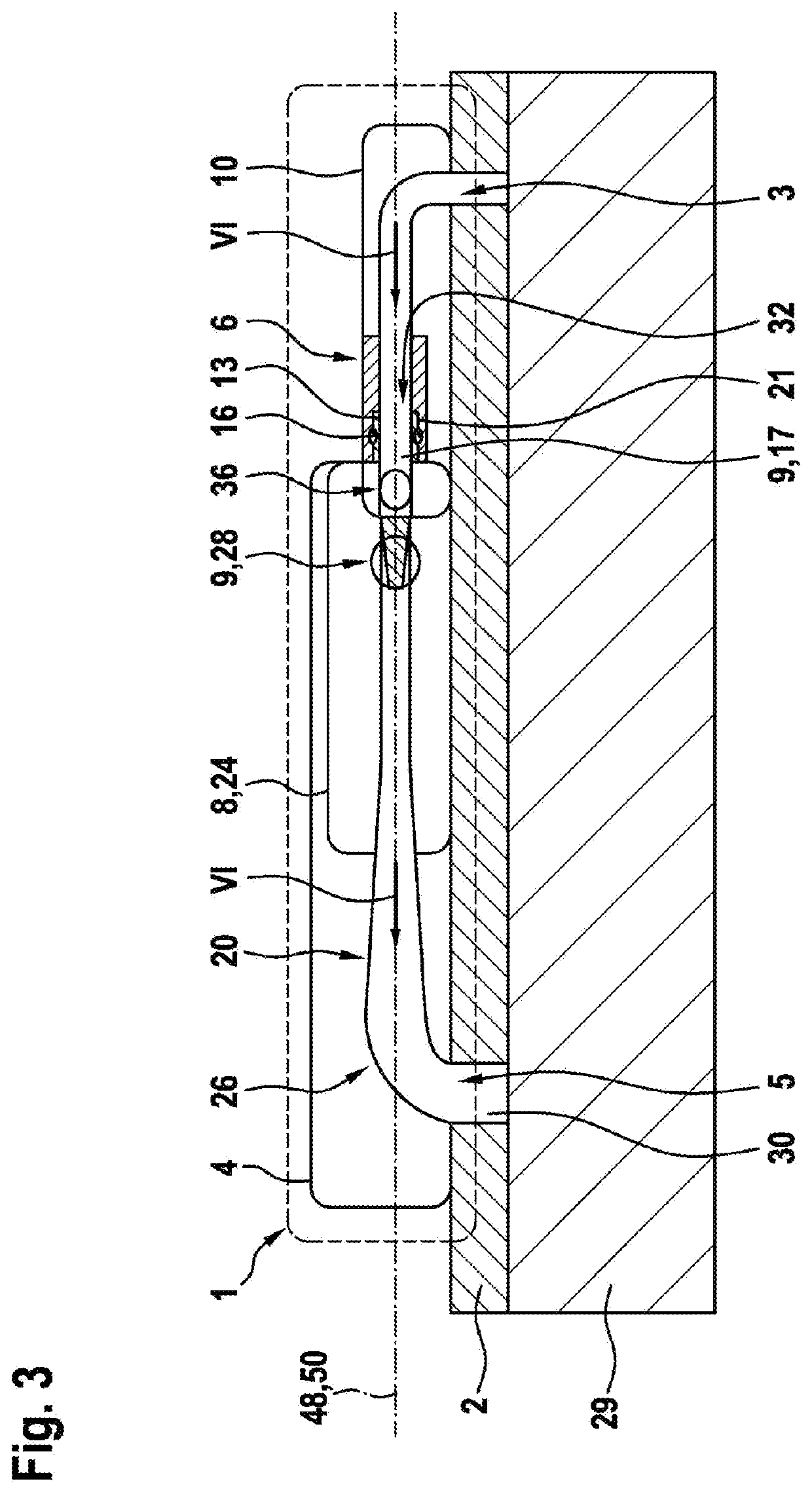Conveying Device for a Fuel Cell Assembly for Conveying and/or Recirculating a Gaseous Medium
a technology of conveying device and fuel cell, which is applied in the direction of batteries/cells, machines/engines, electrochemical generators, etc., can solve the problems of sealing problems and flow losses, and achieve the effect of reducing flow losses and/or pressure reducing flow redirection of gaseous medium, and further reducing flow losses within the conveying devi
- Summary
- Abstract
- Description
- Claims
- Application Information
AI Technical Summary
Benefits of technology
Problems solved by technology
Method used
Image
Examples
first embodiment
[0025]The illustration according to FIG. 1 is a plan view of a conveying device 1 according to the invention.
[0026]FIG. 1 shows that the conveying device 1 has a plate-like carrier element 2, on which the components jet pump 4, metering valve 6, recirculation fan 8 and water separator 10 are fitted. The conveying device 1 serves in this instance to convey and / or recirculate a gaseous medium, in particular H2. Furthermore, the jet pump 4 is driven by a pressurized gaseous medium, wherein the pressurized gaseous medium, which is in particular a propellant, is supplied to the jet pump 4 by means of the metering valve 6. In addition, the metering valve 6 and the jet pump 4 form a combined valve / jet pump arrangement 12, wherein the metering valve 6 is integrated at least partially in the jet pump 4. The combined valve / jet pump arrangement 12 additionally has a first inlet 28, a second inlet 36, an intake region 18 and a diffuser region 20. The recirculation fan 8 forms a first flow conne...
second embodiment
[0031]FIG. 2 is a plan view of the conveying device 1 according to the invention. In this instance, the first flow connection 7 is constructed as a first connection plate 25 to the first internal flow channel 15, wherein the first connection plate 25 is constructed as part of the housing 24 of the recirculation fan 8 and wherein the first connection plate 25 protrudes in the direction of the first flow channel 15 away from the recirculation fan 8. Furthermore, the housing 24 of the recirculation fan 8 is in abutment with the valve / jet pump arrangement 12 in the direction of the first flow channel 15 by means of the first connection plate 25, wherein the first sealing ring 14 is located in the direction of the first flow channel 15 and / or peripherally around the first flow channel 15 between the first connection plate 25 and the valve / jet pump arrangement 12.
[0032]It is further shown in FIG. 2 that the second flow connection 9 is constructed as a second connection plate 27 with the s...
PUM
| Property | Measurement | Unit |
|---|---|---|
| pressure | aaaaa | aaaaa |
| outer diameter | aaaaa | aaaaa |
| inner diameter | aaaaa | aaaaa |
Abstract
Description
Claims
Application Information
 Login to View More
Login to View More - R&D
- Intellectual Property
- Life Sciences
- Materials
- Tech Scout
- Unparalleled Data Quality
- Higher Quality Content
- 60% Fewer Hallucinations
Browse by: Latest US Patents, China's latest patents, Technical Efficacy Thesaurus, Application Domain, Technology Topic, Popular Technical Reports.
© 2025 PatSnap. All rights reserved.Legal|Privacy policy|Modern Slavery Act Transparency Statement|Sitemap|About US| Contact US: help@patsnap.com



